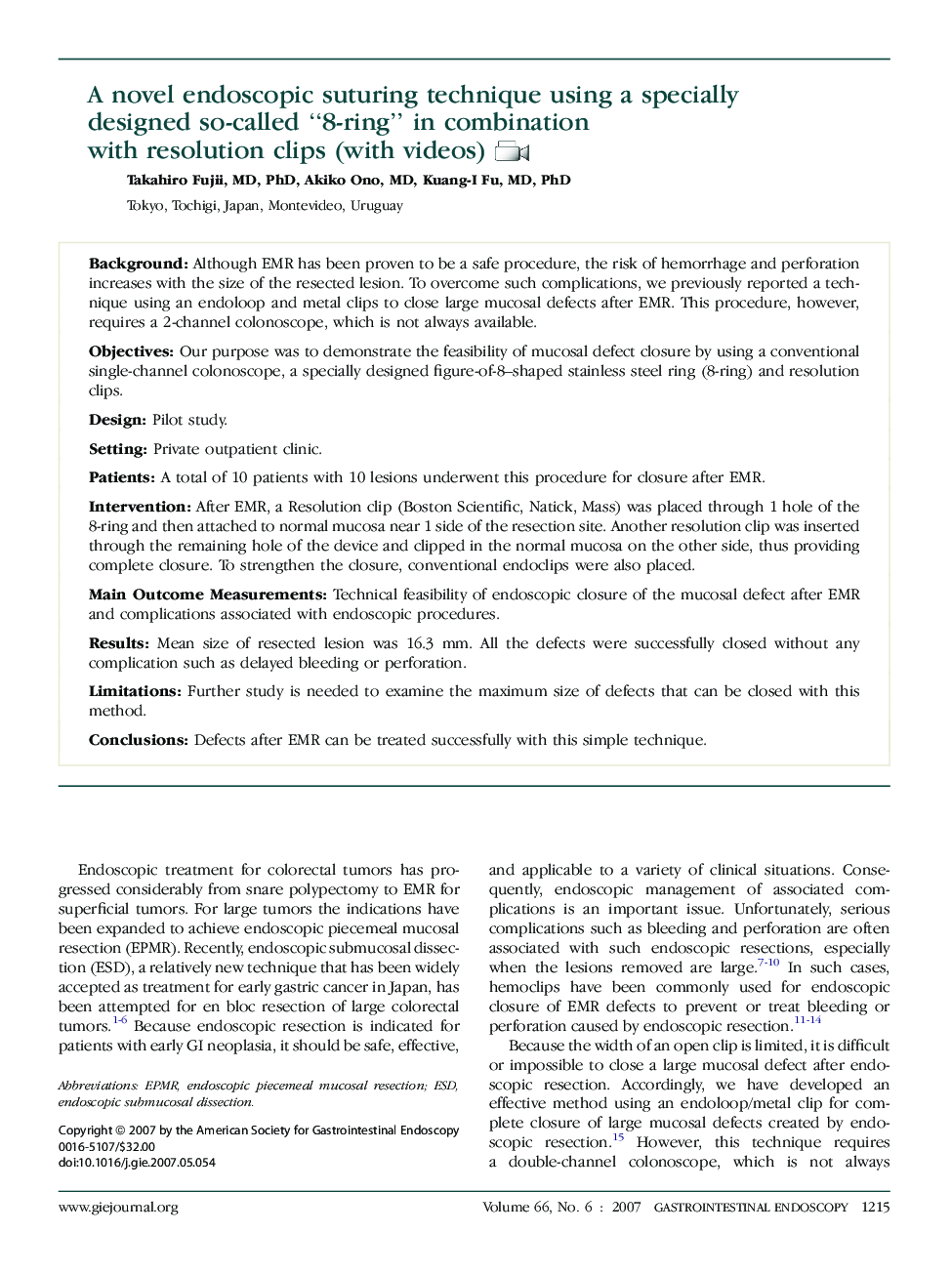| Article ID | Journal | Published Year | Pages | File Type |
|---|---|---|---|---|
| 3309034 | Gastrointestinal Endoscopy | 2007 | 6 Pages |
BackgroundAlthough EMR has been proven to be a safe procedure, the risk of hemorrhage and perforation increases with the size of the resected lesion. To overcome such complications, we previously reported a technique using an endoloop and metal clips to close large mucosal defects after EMR. This procedure, however, requires a 2-channel colonoscope, which is not always available.ObjectivesOur purpose was to demonstrate the feasibility of mucosal defect closure by using a conventional single-channel colonoscope, a specially designed figure-of-8–shaped stainless steel ring (8-ring) and resolution clips.DesignPilot study.SettingPrivate outpatient clinic.PatientsA total of 10 patients with 10 lesions underwent this procedure for closure after EMR.InterventionAfter EMR, a Resolution clip (Boston Scientific, Natick, Mass) was placed through 1 hole of the 8-ring and then attached to normal mucosa near 1 side of the resection site. Another resolution clip was inserted through the remaining hole of the device and clipped in the normal mucosa on the other side, thus providing complete closure. To strengthen the closure, conventional endoclips were also placed.Main Outcome MeasurementsTechnical feasibility of endoscopic closure of the mucosal defect after EMR and complications associated with endoscopic procedures.ResultsMean size of resected lesion was 16.3 mm. All the defects were successfully closed without any complication such as delayed bleeding or perforation.LimitationsFurther study is needed to examine the maximum size of defects that can be closed with this method.ConclusionsDefects after EMR can be treated successfully with this simple technique.
